Authority Is Overrated
Leadership isn’t granted by title—it’s earned through trust, framing, and co-creation. This essay explores a post-hierarchical philosophy shaped by four essential books.

When I join a new team, I begin with a simple exercise: a “guided tour” of oneself. It’s an invitation to share how we think, communicate, and lead. This helps build trust, align expectations, and surface the patterns that shape collaboration. When it’s my turn, I try to be as honest as I can. But I’ve always struggled to summarise my leadership style in one go. Instead, I’ve pointed people to four books that reflect how I think, work, and lead. Each book captures a different aspect. Until now, I’ve never tried to bring them together into a coherent philosophy. This is my first attempt.
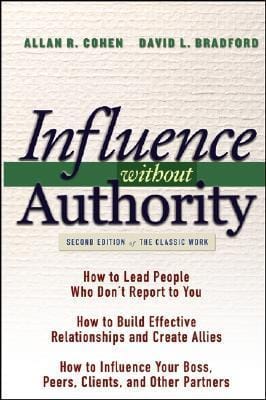
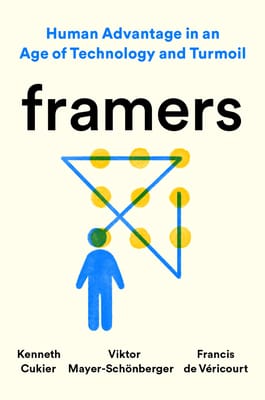
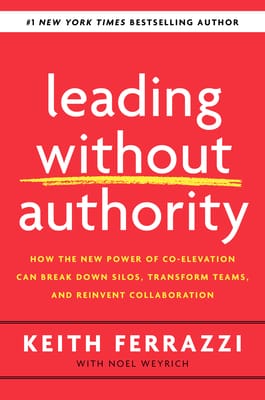
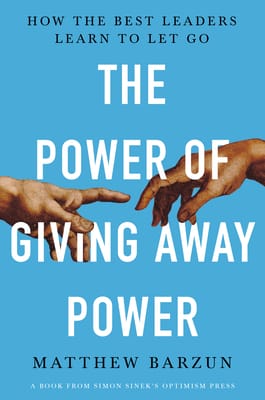
Four recommended books that, together, define a leadership philosophy
Leadership is often mistaken for authority, a subtle but consequential confusion. In many organisations, people wait to be granted a title, a team, or a formal mandate before seeing themselves as leaders. While authority can be assigned by role or structure, leadership must be earned through trust, credibility, and consistent action. Influence doesn’t always follow the org chart. Some of the most effective leaders I’ve known held no formal position, yet they earned trust, guided others through complexity, and became anchors in moments of uncertainty. Just as often, those with official authority struggle to inspire, mobilise, or gain traction. Understanding this distinction is central to how leadership actually functions, and to how I try to cultivate it in others, regardless of where they sit in an organisation.
This ambivalence is reinforced by the enduring influence of two classic texts: 'The Prince' by Machiavelli and 'The Art of War' by Sun Tzu. Often treated as tactical manuals, these works frame leadership as a matter of control, grounded in manipulation, discipline, and the consolidation of power. Their zero-sum logic has shaped a culture where leadership is seen not as a shared endeavour, but as a struggle to seize, defend, and expand dominance. While their insights on strategy and conflict remain relevant, their worldview tends to appeal most to those already in power. Taken to extremes, this worldview echoes the very dangers Hannah Arendt warned against: the erosion of plurality, the instrumentalisation of truth, and the hollowing out of space for dissent and deliberation.
I don’t reject these texts outright. Their lessons on strategy and conflict still resonate. But I root my leadership philosophy elsewhere: in trust, interdependence, and co-creation. By contrasting these older paradigms, I can better explain the path I choose instead. Four books in particular have shaped how I understand and practice leadership: 'Influence Without Authority' by Allan R. Cohen and David L. Bradford; 'Framers' by Kenneth Cukier, Viktor Mayer-Schönberger, and Francis de Véricourt; 'Leading Without Authority' by Keith Ferrazzi, and 'The Power of Giving Away Power' by Matthew Barzun. Each offers a distinctive lens, and together they help illuminate the kind of leadership I strive to cultivate. What follows is a reflection on each.
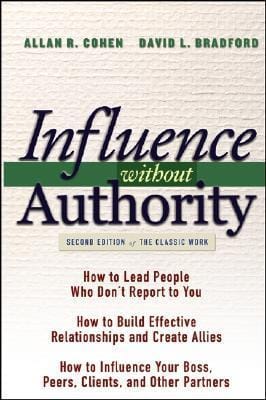
|
‘Influence Without Authority’
|
A job title may grant legitimate authority in formal structures, but rarely does it ensure meaningful execution. When leaders rely too heavily on formal authority, they breed fragmentation and disengagement. Cohen and Bradford argue that real authority is earned through influence, built on mutual respect and a strategic exchange of value.
Their model introduces “currencies”: things people genuinely care about, from recognition and resources to flexibility and learning. Especially in flat or matrixed organisations, where control is diffuse, this model teaches us to lead through empathy, reciprocity, and relationship capital – not mandate.
Authority, in their view, is not a sovereign claim, it’s a bridge to collaboration, “an invitation to co-create”. Influence begins with self-awareness, grows through trust, and flourishes through consistent contribution to shared goals. In the absence of genuine connection, authority is noise. But when grounded in respect and generosity, influence becomes real leadership.
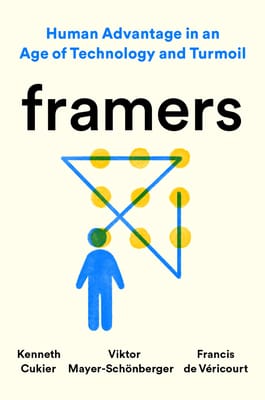
|
‘Framers’
|
'Framers', by Kenneth Cukier and co-authors, is the book I recommend most often. Its core insight is simple but profound: our defining human advantage is not intelligence or emotion, but our unique capacity to frame — to construct and shift mental models that shape how we interpret the world, generate possibilities, and act with purpose.
The authors identify three cognitive tools at the heart of this process — causality, counterfactuals, and constraints. Framing is the lens through which decisions are made. Whether we’re posing new questions, imagining alternatives, or navigating uncertainty, frames help us focus attention, reduce complexity, and clarify what is possible — which, when mastered, enable us to think more clearly, lead more creatively, and act more responsibly.
For me, 'Framers' reveals something deeper still: framing is an act of leadership. Good leaders don’t simply respond to problems; they shape the lens through which others see those problems. They reveal common ground, make complexity manageable, and enable shared meaning. Poor framing — rigid, narrow, reactive — leads to failure. But generative framing opens new futures.
In the age of artificial intelligence, this becomes even more urgent. AI excels at optimising within a frame; only humans can invent new ones. As machines become better at providing answers, we must become better at asking the right questions. And in a world fractured by conflict, misinformation, and tribalism, framing is not just a leadership tool — it is a pathway to peace. Peace is rarely impossible; it is often merely unimagined. When leaders lack the imagination to reframe entrenched narratives, they close the door to resolution. But when they dare to see anew, different possibilities emerge. Framing is the hard edge of diplomacy, vision, and shared understanding. At its core, leadership is the art of helping others see a new future — and believe it’s possible.
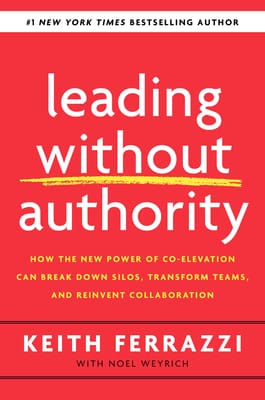
|
‘Leading Without Authority’
|
'Leading Without Authority' by Keith Ferrazzi reimagines leadership for a networked age. At its core is co-elevation: the idea that leadership is no longer tied to rank but to mutual responsibility and shared purpose. Leadership means lifting others up — across functions, across structures, and without waiting for permission. Ferrazzi urges us to redefine “team” as anyone essential to the mission, regardless of hierarchy. His model is built on trust, inclusion, and vulnerability.
Co-elevation, as I see it, is more than individual uplift — it’s a strategy for collective transformation. Ferrazzi speaks often to the personal dimension: being proactive, emotionally intelligent, and generous. Yet what resonates most is the structural shift his model enables. Co-elevation becomes a coalition of leaders —often peers — who collaborate across silos not just to get things done, but to rewire the organisation itself. Real impact comes not from vertical command, but from horizontal commitment: when leaders with no formal authority over one another still show up for the mission, united by shared purpose and mutual care. In a world of disruption and complexity, organisations cannot afford internal turf battles or passive bystanders. Co-elevation is how leadership networks become system-changers. It’s not “your team” or “my team”— it’s our shared challenge. And in that space, leadership becomes collective, durable, and catalytic.
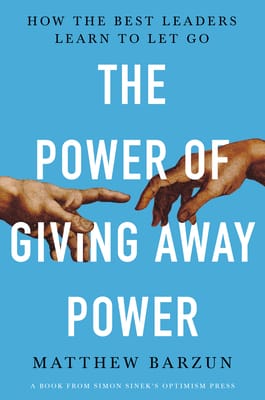
|
‘The Power of Giving Away Power’
|
Matthew Barzun’s 'The Power of Giving Away Power' challenges the dominant leadership model of the “Pyramid”— a structure rooted in hierarchy, control, and predictability — and offers in its place the “Constellation”: a flexible, interdependent system where power is distributed, not concentrated. In this model, leadership is less about directing others and more about drawing out their potential, creating conditions for authentic contribution, and enabling integration over compromise. Inspired by Mary Parker Follett, Barzun invites us to reimagine meetings, institutions, and relationships as spaces of co-creation. Power isn’t diluted — it’s multiplied when shared.
What struck me most is how closely this mirrors the architecture of the Internet. The Internet was never a Pyramid; it emerged from voluntary interconnection. At its best, Internet governance reflects this Constellation mindset: diverse actors working together, not through control, but shared stewardship.
Yet too often, Internet institutions face pressure to revert to Pyramid thinking in the face of scale or crisis. Barzun’s work is a timely reminder: if we want resilient, inclusive, and adaptive governance, we must resist the lure of command-and-control and recommit to the generative power of interdependence. “Freedom with, not freedom from”— that’s the promise of the Internet. And its institutions must evolve as Constellations, not Pyramids.
Weaving them together
Max Weber’s classic typology identifies three types of legitimate authority: traditional (based on custom), charismatic (based on personal magnetism), and rational-legal (based on systems and rules). Most real leaders blend the three types. The four books together, in many ways, offer a post-Weberian view. One where legitimacy flows not from hierarchy or charisma, but from trust, co-elevation, and framing.
In this way, my own philosophy is shaped by:
- A belief that real authority comes with a leadership style that is relational, co-created, and distributed ('The Power of Giving Away Power').
- A recognition of the limits of bureaucracy, and the need for imagination ('Framers').
- A rejection of charisma and hierarchy as sole sources of influence (Leading Without Authority, Influence Without Authority),
These aren’t abstract ideas. They come from my experience in the world of Internet governance — where institutions are fragile, deeply interdependent, and built not to enforce dominance but to reflect the Internet’s ethos: openness, interoperability, and shared responsibility.
In that world, leadership isn’t about command and control. It’s about enabling others, coordinating across difference, and building ecosystems of trust. Just as the Internet runs on voluntary protocols layered across systems, so too must its institutions be led — with humility, clarity, and collaboration.
This is a view where legitimacy flows not from hierarchy or charisma, but from trust, co-elevation, and framing.
Final Thoughts
Of course, leadership is not only about ideals — it is also about execution. Mission-driven organisations, especially at scale, cannot function without structure, clarity, and decisiveness. Tough decisions must be made. Roles must be defined. Accountability must be real.
But structure should serve the mission, not replace it. When process overtakes purpose, organisations lose direction and soul.
My philosophy rests on four practices:
- Framing the situation in a way that expands possibility;
- Exercising influence through reciprocity and mutual respect;
- Co-elevating peers rather than commanding subordinates;
- Creating structures where authority can be shared without being diluted.
It rejects the zero-sum logic found in older leadership traditions. In contrast to 'The Prince' or 'The Art of War', it does not treat others as obstacles to outmanoeuvre or resources to be exploited. It treats people as agents in their own right — partners in shaping outcomes.
This philosophy does not promise easy results. It requires patience, self-awareness, and the courage to give away control. But in return, it offers something essential in a pluralistic world: a way of leading that builds durable alignment without coercion, and influence that lasts beyond one’s own voice.
